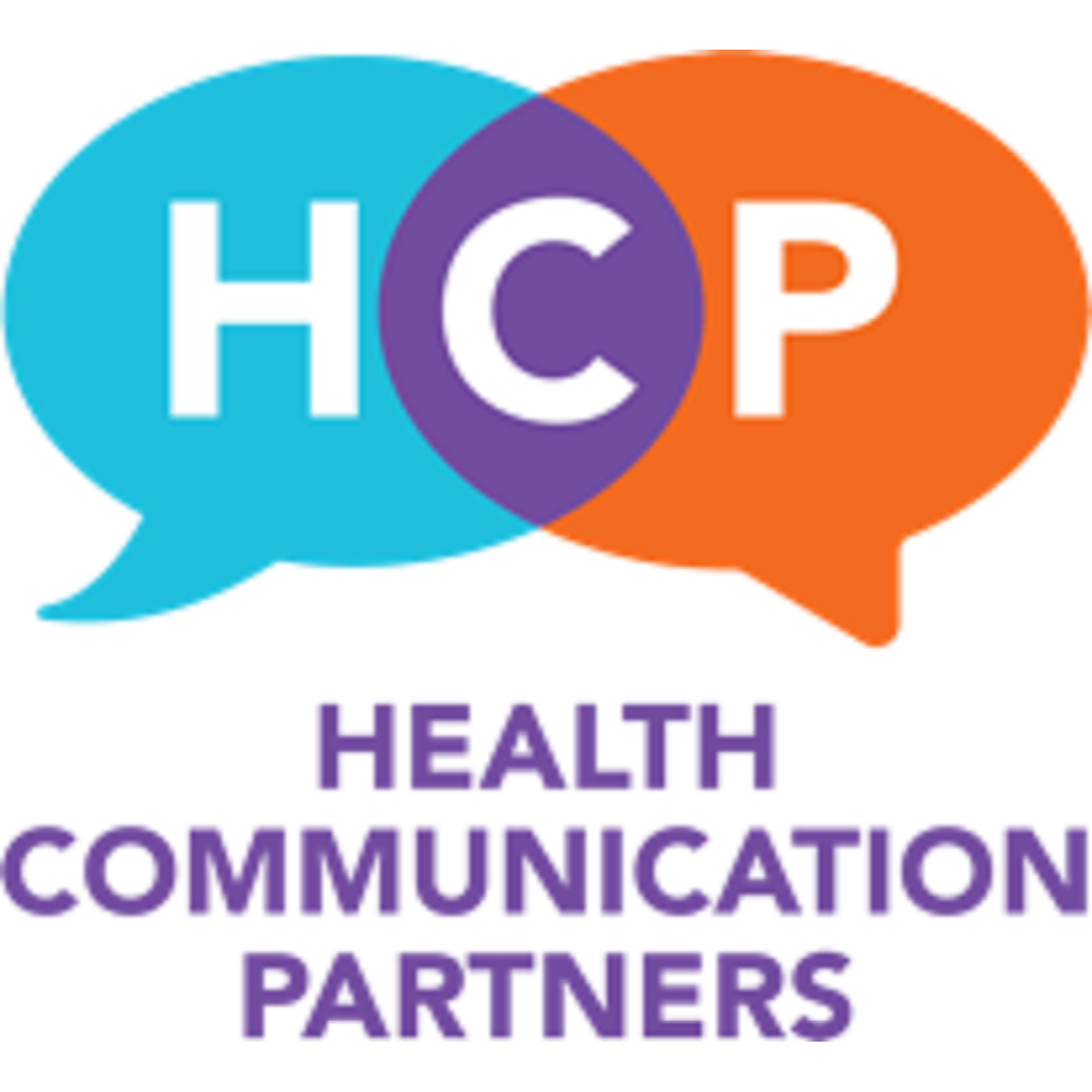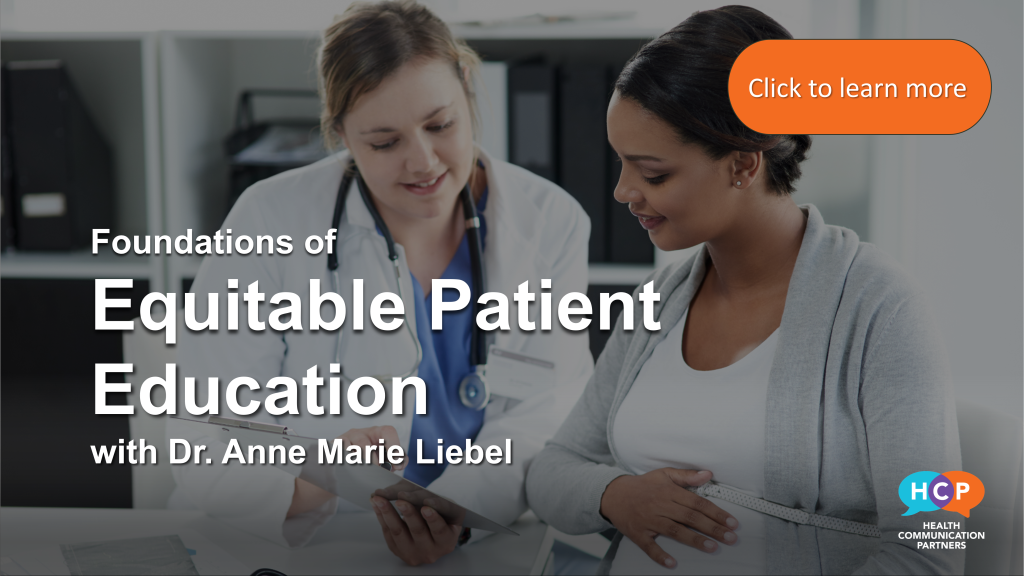It’s the first anniversary of the “10 Minutes to Better Patient Communication” podcast series! We’re proud, and we’re grateful to you our listeners. We’re celebrating Health Literacy Month as well. If you’ve ever wondered what all the fuss is about when it comes to health literacy, this is for you. You’ll learn some of the basic fundamental issues in health literacy research and practice. So you can choose where to start – or go next – in your organizations’ support of health literacy. Party on!

EPISODE TRANSCRIPT
Hi. This is Ten Minutes to Better Patient Communication. I’m Dr. Anne Marie Liebel. And it’s a special episode today! It’s the first anniversary of this podcast series! That’s right, 10 Minutes to Better Patient Communication is one year old! We’re totally happy and proud, and we’re grateful to you for listening, sharing, sending requests, and downloading episodes by the thousands and thousands.
This is also health literacy month, so I get to do our first episode of our second year about the topic that got me started in the health sector years ago: health literacy. Think of this as a crash course of sorts. This is a great episode to help your wrap your head around this field and pick a good place to start if you want to help your patients or your organization get going with improving health literacy.
“When I say ‘health literacy,’ what does that mean to you?” I asked 4 physicians this question. I got 4 very different answers. And all of them were ‘right.’ As health professionals, you care about health literacy. I know this because when I’ve done in-person talks, nothing has drawn more attention and put more butts in chairs than when I’m talking about health literacy.
 You want to help your patients with their health literacy. You want to feel prepared to do so. I can say this because it’s what providers tell me when I give these talks. When you want to help patients with their health literacy, where do you start? Health literacy is a large field. The research on health literacy covers a massive territory. So it’s easy to get lost in the weeds. I want to be helpful here. Namely, I aim to help you narrow your focus.
You want to help your patients with their health literacy. You want to feel prepared to do so. I can say this because it’s what providers tell me when I give these talks. When you want to help patients with their health literacy, where do you start? Health literacy is a large field. The research on health literacy covers a massive territory. So it’s easy to get lost in the weeds. I want to be helpful here. Namely, I aim to help you narrow your focus.
Health literacy can mean quite a few different things. I think there’s somewhere around 20 different definitions of health literacy. Now, to be clear, most of them agree in the main, and their differences tend to be fine-grained. It is important to note, however, that there are a few definitions that are based on some different core assumptions than the majority.
Here, I’m offering some loose groupings or distinctions in health literacy–both research and practice–that have emerged in my reading of the research, and talking with providers over the years. Distinctions you may find helpful, if you’re deciding where to start.
My focus will be mainly on the clinical encounter. That’s also where the majority of health literacy research is focused. You probably know by now My background is in language, literacy and education, so I’ll do my best to avoid professional jargon. Let’s break down some terms.
Literacy has been used for decades to indicate a kind of familiarity with, or a basic understanding of, some topic. Terms like financial literacy might indicate some level of familiarity with, say, personal finance, maybe some of how markets work. Environmental literacy might refer to basic knowledge about biospheres, the water cycle, waste systems. Back in the day, if you had computer literacy, that meant you knew your way around a computer, beyond just turning it on and off. This sense of familiarity, or a basic level of understanding, is part of what’s denoted by the ‘literacy’ in ‘health literacy.’ (Familiarity with what? I’ll get to that in a minute.)
Literacy has also frequently been used to refer to a set of skills, competencies, or capacities. The skill most often in question is reading. That’s the case in health literacy as well. Can a patient read the information he or she is given? What attention are health systems paying to the construction of written documents by? Where and how are images being used, to what effect? Clearly these are important considerations, and the majority of the research reflect this focus.
Health literacy is not always about reading. Most providers I talk to are also concerned about talking with patients, and this too is part of health literacy. This is captured in the move toward ‘plain language’ in clinical communication.
Ok so the literacy part denotes some level of familiarity, and/or some skill. But familiarity with what? Skills or competencies with what? That’s the health part. I’m feeling brave today, so I’ll take a deep breath and go there. Join me, won’t you?
Biomedical knowledge. There’s a staggering range of biomedical subject areas that people are supposed to have some familiarity with or understanding of, where health literacy is concerned. Medical knowledge (basic anatomy, the various body systems, what treatments mean and how they work, etc.) Scientific knowledge (how medications work, how medical devices work, basics on how lab research is conducted/reported, etc.) Wellness and nutrition (basic nutrition, food systems, how the body interacts with the environment, various ways of keeping oneself well, etc.)
Organizational knowledge. From the start, even the earliest health literacy research has included individuals knowing something about health care systems. So, being familiar with the ways that organizations work is part of what is assumed in an individual’s health literacy.
More recently, this also has begun to include familiarity with how health insurance works. I am very glad to hear about the research in health literacy that’s moving us toward modifications to the language used by insurance companies in keeping with the federal government’s plain language guidelines.
I want to make clear: there is much more at stake here than someone knowing the facts about any of these topics I’m mentioning. Any level of understanding of a concept also means knowing even a little bit about the logic or line of reasoning behind the facts.
For example, Why does it matter that the drug works this way in my body? Why do I go to a specialist before I come back to you? What is important about this that I should remember, and why is it important?
That is, understanding includes having some access to the kind of thinking that is used by those in the know to link raw bits of data together. Think of this as anything that would finish the sentence, “It works this way because…” This too is part of what is assumed in health literacy.
Then there’s the specialized language involved. Yes, the medical jargon and all that Greek and Latin. And quirky names that pharmaceutical companies give their products. There’s also those terms that have one meaning in everyday life, and a different meaning in a specialized medical context (the words “critical” and “orientation” are two of my personal favorites). Health literacy research also explicitly involves all sorts of meta-processes: knowing what you know, knowing what you don’t know, knowing where to find out what you don’t know, and how to judge its reliability. Whew.
Who are we talking about here? Patients. But you already knew that. Health literacy research is overwhelmingly about the health literacy that patients do (or don’t) have. Increasingly, research is paying attention to some other folks too: patients’ family members, friends, and community members. This is because it the tide has turned from looking at health literacy exclusively as something happening in an individual’s head, toward something that happens between people.
Though most research shares an underlying focus on health literacy as something an individual has, there has been attention to health literacy as something people do. Context has also been receiving some attention in health literacy research. From the start, the focus has overwhelmingly been in the clinical encounter. What I think is exciting and super helpful is the research that’s showing us other contexts for health literacy.
For instance, there’s loads of research on how individuals ‘do’ various health literacy skills when they’re online in a web-based environment. There’s studies on how people who share a common condition ‘do’ health literacy. Some studies take a look at educational environments and what they might have to do with people’s health literacy. I think this is exciting because taken together, these help us see how much context matters in health literacy. Who you are, where you’re at, who’s around you – these matter.
Again I’m making some general statements based on the questions I’ve received, the many conversations I’ve had, and the research I’ve been spending some quality time with over the years. My purpose here is to help you narrow your focus, and pick a manageable starting place for yourself or your organization. What one of these areas is emerging as a concern? What does it make sense for you to prioritize, based on your context and on those you serve?
Even with all this, health literacy is a new field. It’s made quick advances, and it has a long way yet to go to fulfill the great promises these lines of research hold. I’m a fan of yours (and of health literacy, if that’s not already obvious). So I’m especially interested in supporting the work you do around health literacy, wherever you choose to start. Reach out to me at healthcommunicationpartners.com I’m Dr. Anne Marie Liebel and this is the first anniversary of 10 Minutes to Better Patient Communication. Thank you!
